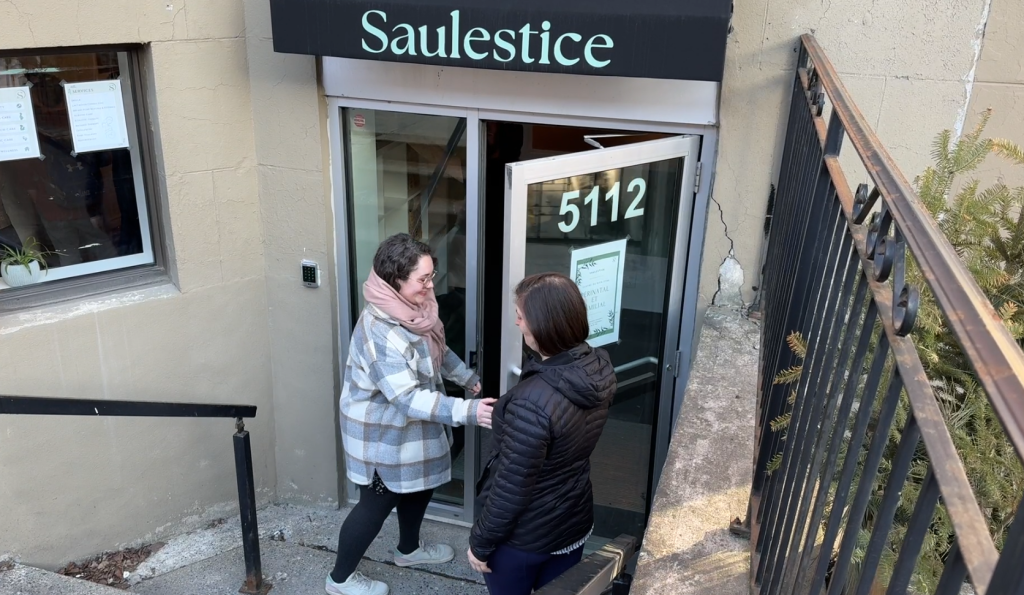Lyme disease trending upwards in Quebec: INSPQ report

Posted June 27, 2024 11:16 am.
Last Updated June 27, 2024 7:00 pm.
Lyme disease is on the rise in Quebec with an increase in cases and new municipalities in the endemic zone each year, according to the Institut national de santé publique du Québec (INSPQ).
Montrealer Jasmine Rochereul believes she contracted Lyme disease from a tick while laying in the grass at Jeanne-Mance Park near Mount-Royal.
“We don’t think that you can get it just lying in the park because people don’t do tick checks,” she said.
Two years later as she deals with chronic health issues, she’s warning others to check for ticks.
“It is so preventable, by wearing bugs spray, by doing tick checks, and if you do these things, you can avoid dealing with long-term health ramifications like me,” she said.

Rochereul didn’t have the usual bullseye rash that shows up with Lyme within a month after a tick bite, she says she just felt sick and the doctor she consulted in 2022 didn’t test for it.
“At the time, Montreal wasn’t considered an area in which it was very common,” she said.
Six months later, she was confirmed to have Lyme disease after getting tests in the US. She’s been treated with multiple rounds of antibiotics and even now, she often feels unwell.
“Fatigue, feeling under the weather, and I’ve been dealing with a lot of joint pain,” Rochereul added.

According to the data, as of June 22, 103 cases of Lyme disease have been recorded in Quebec, half of which are in the Eastern Townships, which makes it the most affected region.
In 2023, out of 652 cases, 322 most likely came from the Eastern Townships.
The proximity to the American border could be the reason why the region is the epicentre of cases in Quebec.
Dr. Geneviève Baron, public health and preventive medicine doctor at the CIUSSS de l’Estrie-CHUS, said that up until around 2011, the region had no cases of Lyme disease, but some people caught it during trips to United States, where the ticks survived during winter.
“With the milder climate, ticks have slowly established themselves in our region,” explained Dr. Baron. “There are areas that are perhaps more affected because ticks have been established there for longer, but some areas are more suitable for their habitat.”
Deer, for example, which are popular in certain areas of the Eastern Townships, are animals where ticks like to breed.
The number of municipalities in an endemic area has surged from 117 in 2023 to 461 this year.
The INSPQ emphasizes, however, that this sharp increase is largely due to criteria changes.
Citizens can review the map on the INSPQ website which details all the municipalities where blacklegged ticks are present and active, as well as a map of endemic areas for Lyme disease in Quebec.
To be considered an endemic area, a municipality must have reported at least three locally acquired human cases in the last five years or have 23 submissions of human-caused blacklegged ticks under passive surveillance within the last five years.
“If you’re going to be out in the regions, especially if you’re wearing shorts, the likelihood that a tick that’s infected with the bacteria that causes Lyme disease, the probability that that tick will bite you and transmit the infection is higher now than it would have been 10 to 15 years ago,” said Dr. Christopher Labos, a cardiologist with a degree in epidemiology.
If all three stages of the tick (larva, nymph, adult) are spotted or at least six specimens of the same stage are collected in one year, the municipality can also be classified as an endemic zone.
“In 2024, the definition of the endemic zone for Lyme disease was expanded to better represent the epidemiological situation of this disease in Quebec,” according to the INSPQ.
With the new definition, the Capitale-Nationale and Chaudière-Appalaches have been added to the map of endemic zones in Quebec.
Some regions spared
According to the INSPQ, “the current distribution of populations of blacklegged ticks established and infected with the bacteria that causes Lyme disease will continue to expand in Quebec.”
Dr. Baron believes that all of southern Quebec will be affected by Lyme disease very soon.
“Quietly not quickly, with birds – because ticks can be carried by birds – with deer and other small mammals, it is slowly expanding towards the North,” she explained.
Blacklegged ticks are absent in the more northern regions: Côte-Nord, Northern Quebec, Terres-Cries-de-la-Baie-James and Nunavik.
However, the INSPQ mentioned that the risk of acquiring Lyme disease is still possible in all regions of Quebec due to the potential presence of ticks which have been infected and can be brought occasionally by migratory birds.
Northern Quebec remains protected by its climate because ticks survive in relatively humid habitats such as forests and woodlands.
“Tundras are not suitable habitats for ticks, so unless the vegetation changes with the climate, they should not be habitats that host many ticks,” said Dr. Baron.
Advice to the public
The first symptoms of Lyme disease, which can appear within a month of a tick bite, are a redness that grows larger over time, usually exceeding five cm, fever and muscle or joint pain.
When the disease is left untreated, arthritis, facial paralysis, heart rhythm disturbances and other multiple skin rashes may develop.
Dr. Baron said that Lyme disease can be treated with antibiotics and there are treatments for all stages of the disease.
If you are bitten by a tick, health officials recommend calling 811.
The healthcare professional on the line will assess the condition of the infection with the patient and they may be redirected to a pharmacist for preventive treatment if eligible.
If the person already has symptoms after noticing a tick bite, they should consult a doctor.
To avoid tick bites, Dr. Baron recommends using mosquito repellent containing DEET, wearing long clothing when going out in nature and avoiding walking in vegetation.
After returning home, showering will remove any ticks that are not yet attached and inspecting your body will help spot intruders.
If you see a tick, gently pull upwards with eyelash tweezers. For those who have pets that go outdoors, it is important to examine them regularly and remove ticks the same way.
Many people are bitten by ticks without leaving their yard.
“I will tell everyone around me, ‘guys, when we get home, we’re all going to do take checks,'” Rochereul said.
To avoid becoming a breeding ground for ticks, residents should get rid of piles of dead leaves — a place that ticks love — and mow your lawn. As these insects hate droughts, it is good to have a terrace or children’s play area in a place exposed to the sun.
“If we realize that it’s endemic in more places and we can highlight that, then that will lead to avoiding more people having the same fate as me of not getting diagnosed in time because people say, ‘oh, you couldn’t have gotten Lyme here,'” said Rochereul.
—
The Canadian Press’ health content receives funding through a partnership with the Canadian Medical Association. The Canadian Press is solely responsible for editorial choices.
–This report by La Presse Canadienne was translated by CityNews








